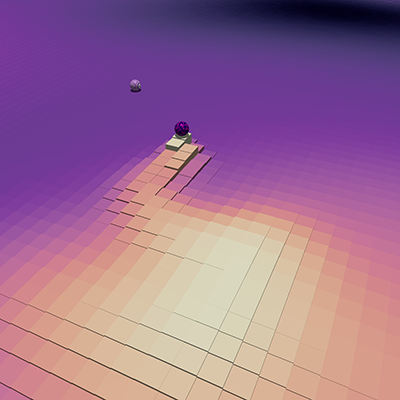Stochastic search processes are ubiquitous in nature and are expected to become more efficient when equipped with a memory, where the searcher has been before. A natural realization of a search process with long-lasting memory is a migrating cell that is repelled from the diffusive chemotactic signal that it secretes on its way, denoted as an autochemotactic searcher. To analyze the efficiency of this class of non-Markovian search processes, Hugues Meyer and Heiko Rieger (A3) developped a general formalism that allows one to compute the mean first-passage time (MFPT) for a given set of conditional transition probabilities for non-Markovian random walks on a lattice. They showed that the optimal choice of the n-step transition probabilities decreases the MFPT systematically and substantially with an increasing number of steps. It turned out that the optimal search strategies can be reduced to simple cycles defined by a small parameter set and that mirror-asymmetric walks are more efficient. For the autochemotactic searcher, a model for migrating cells searching for a target, like various immune cells, they showed that an optimal coupling between the searcher and the chemical reduces the MFPT to 1/3 of the one for a Markovian random walk. These results were now published in Physical Review Letters and selected as Editor's Suggestion.
Link to the article in Phys. Rev. Lett.
Press release from Saarland University


Sketch of the autochemotactic walk Dr. Hugues Meyer (A3)


